Many of our Southeastern forests are dominated by oaks and pines, which don’t have much color in the fall. You can get amazing red, yellow and orange colors by planting these 5 trees that grow well in the Southeastern U.S.
1. Japanese maple (Acer palmatum)
With so many cultivars to choose from, you’ll be able to find the right size, shape, and color for your backyard. In the fall, some Japanes maple leaves turn gold, some turn bright red, and others orange or other hues. Be sure to ask your local garden center about the fall colors when picking out your tree.
While most Japanese maples prefer part shade, there are some trees that will tolerate full sun. Most prefer well-drained soil. Heights of these trees range from just a couple feet (dwarf varieties) to 30+feet.
This stunning tree is just around the corner from my house. The leaves are green all spring and summer and start to turn this gorgeous red color in the mid-November. I walk past it several times a day as I walk my dogs, and it still amazes me every time I see it.
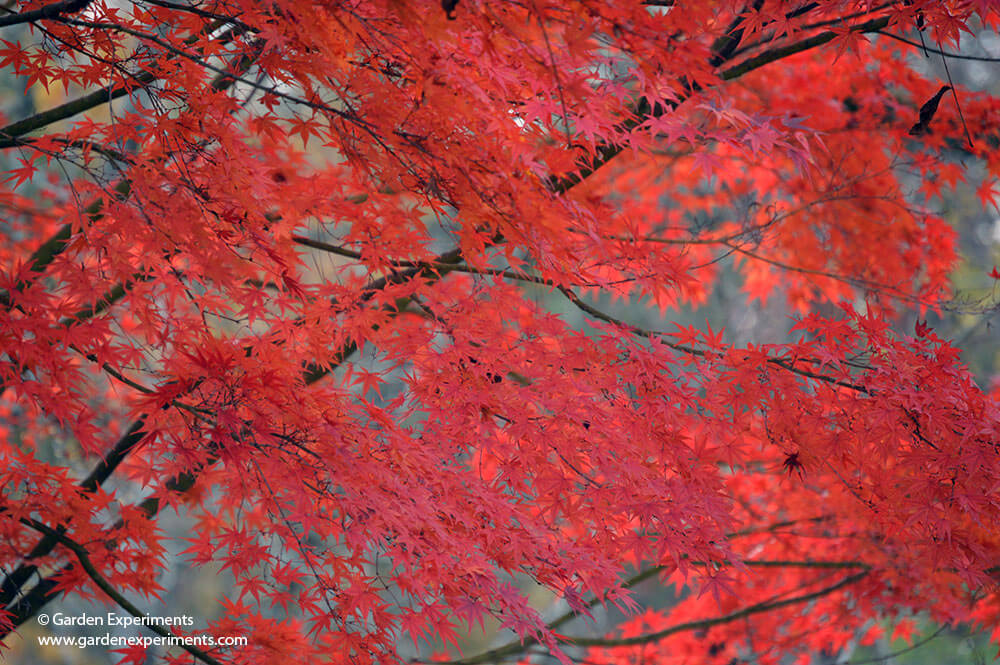
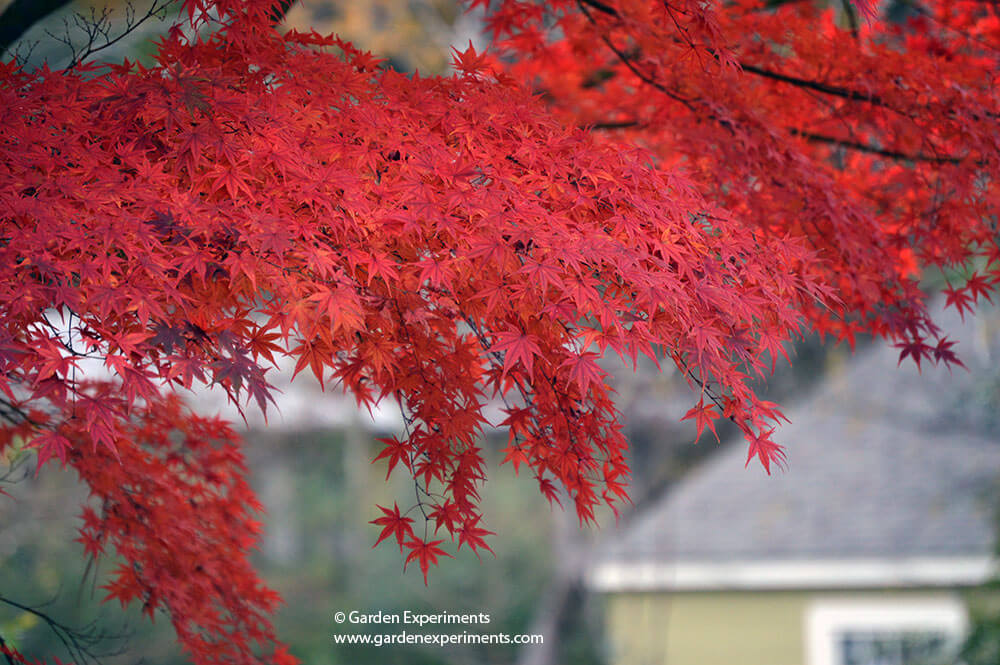
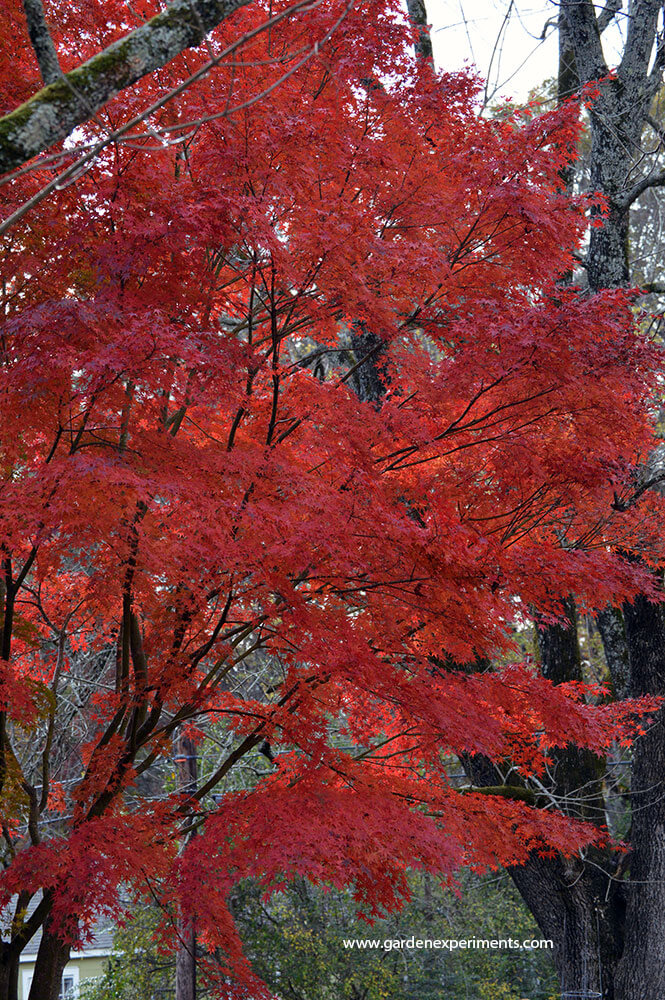
2. Sugar maple (Acer sacccharum)
To add a little orange/gold color to your landscape, the sugar maple is a sure bet. It’s one of my favorite trees for fall color, and it’s a native southeastern tree. Not only do we get to enjoy the bright color of the leaves in fall, but the samaras (the winged fruit) provide food for squirrels and birds too!
They can grow to 80 feet though it is a slow grower. Be sure to account for the height and width of the tree when picking where to plant it in your backyard. It will provide a lot of shade for you, so pick a spot for a hammock!
The fall leaves start out yellow and then slowly change to orange and then bright red. You get three colors from one tree! If you’re wondering what tree leaves change color in the fall, these are a few of the most colorful leaves.
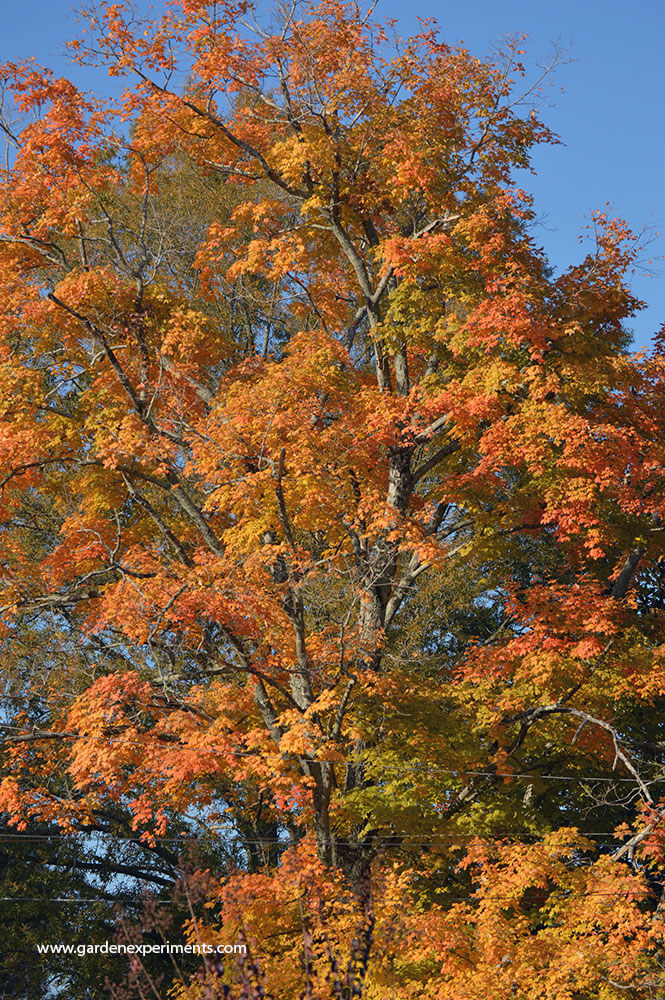
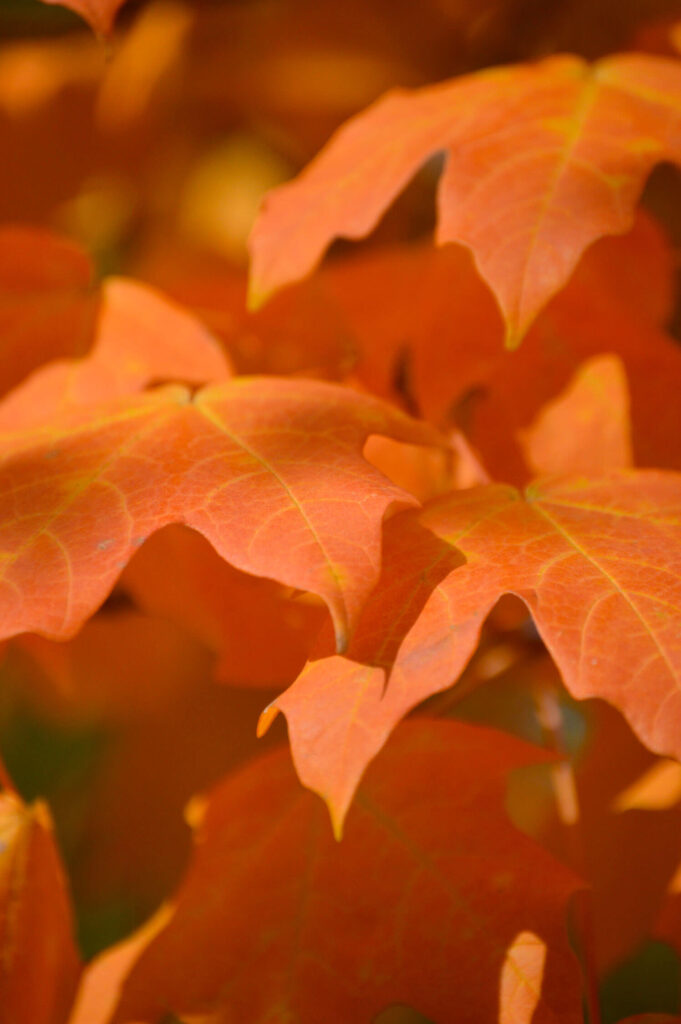
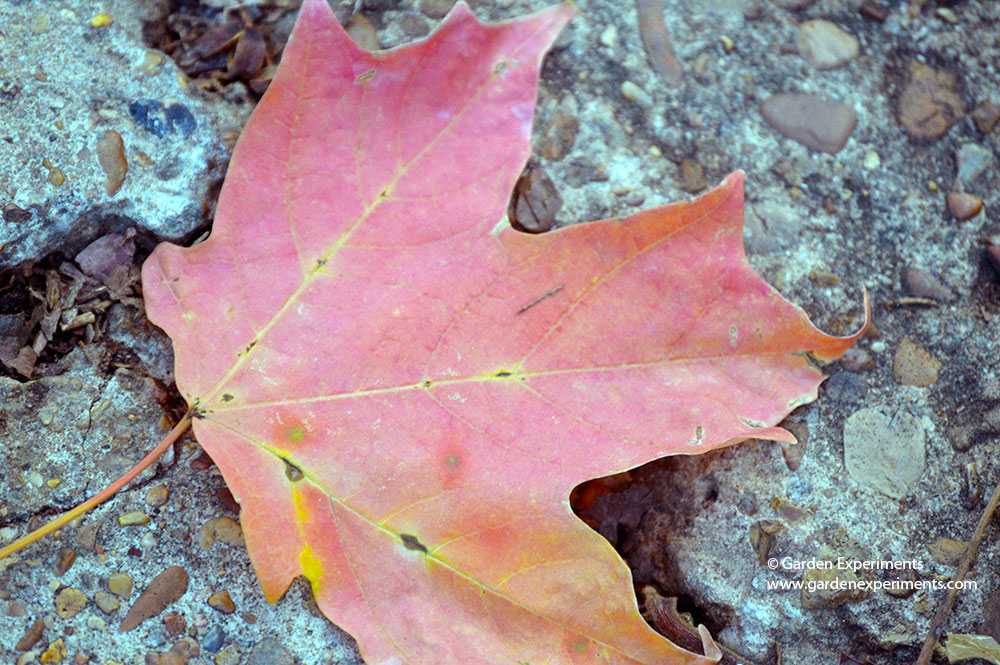
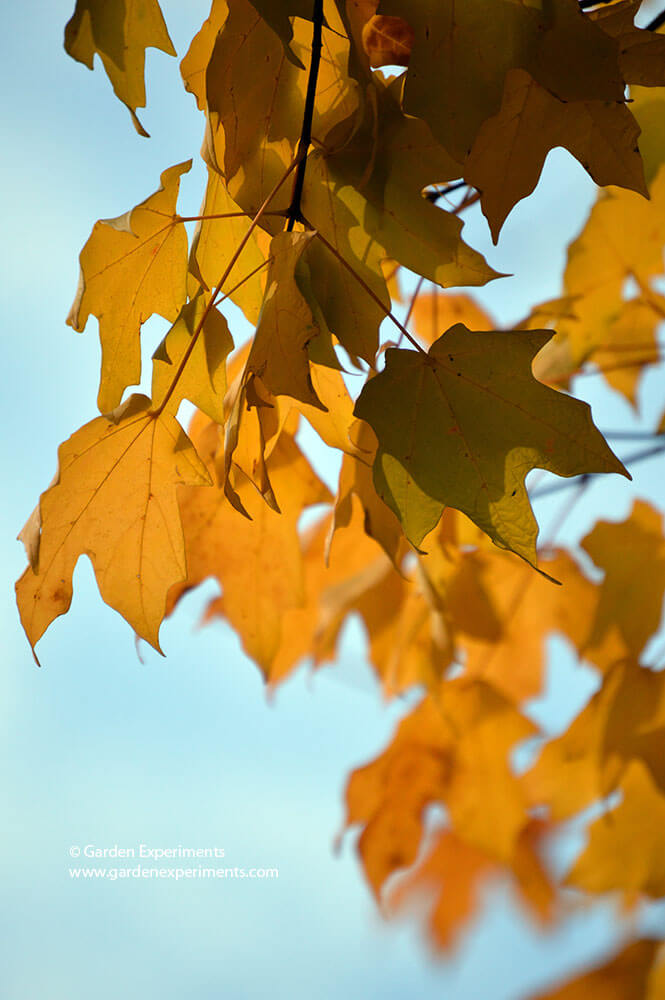
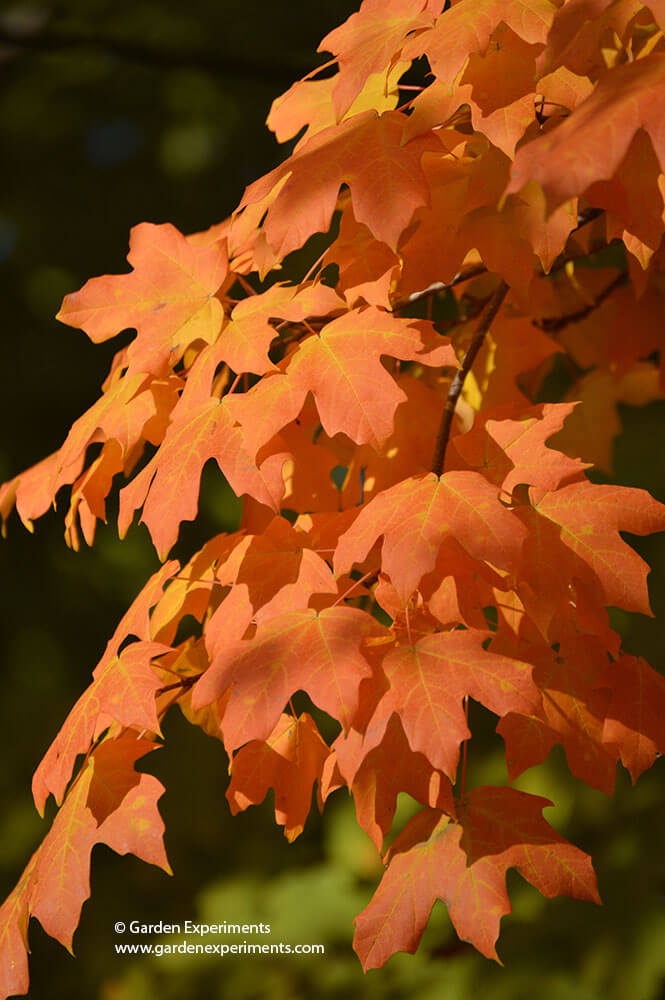
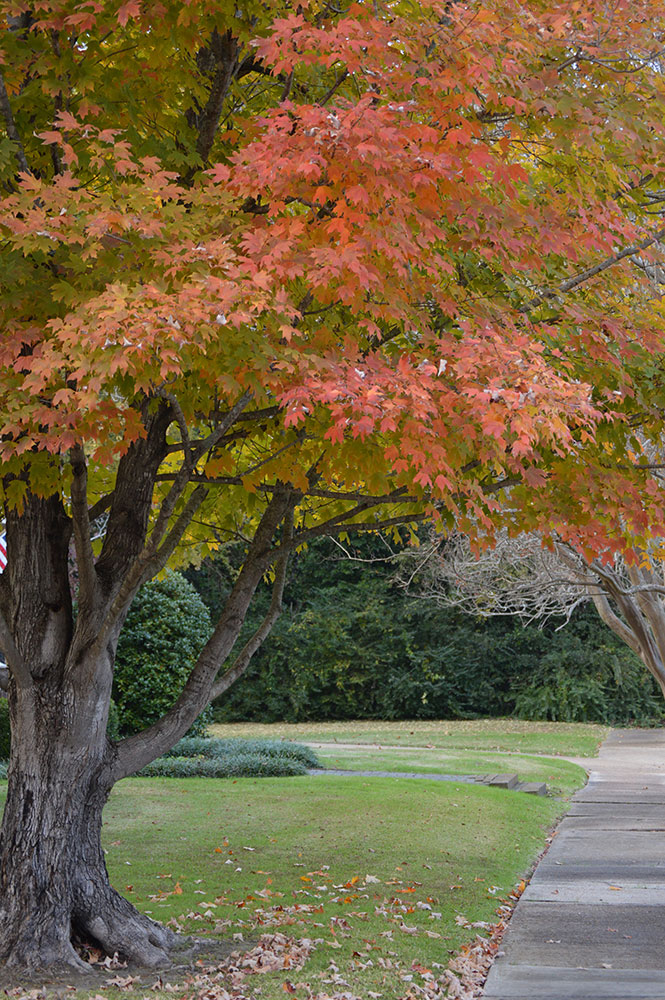
3. Red maple (Acer rubrum)
Another native tree, the red maple prefers full sun and can grow to be as tall as 60 feet with a crown width of about 40 feet. Unlike the sugar maple, it is a pretty fast grower (medium to fast). It tolerates a wide range of soil conditions but prefers the soil to be moderately wet.
Just like the sugar maple, the samaras (winged fruit) provide fall food to squirrels and birds. In the fall, the leaves turn a bright red.
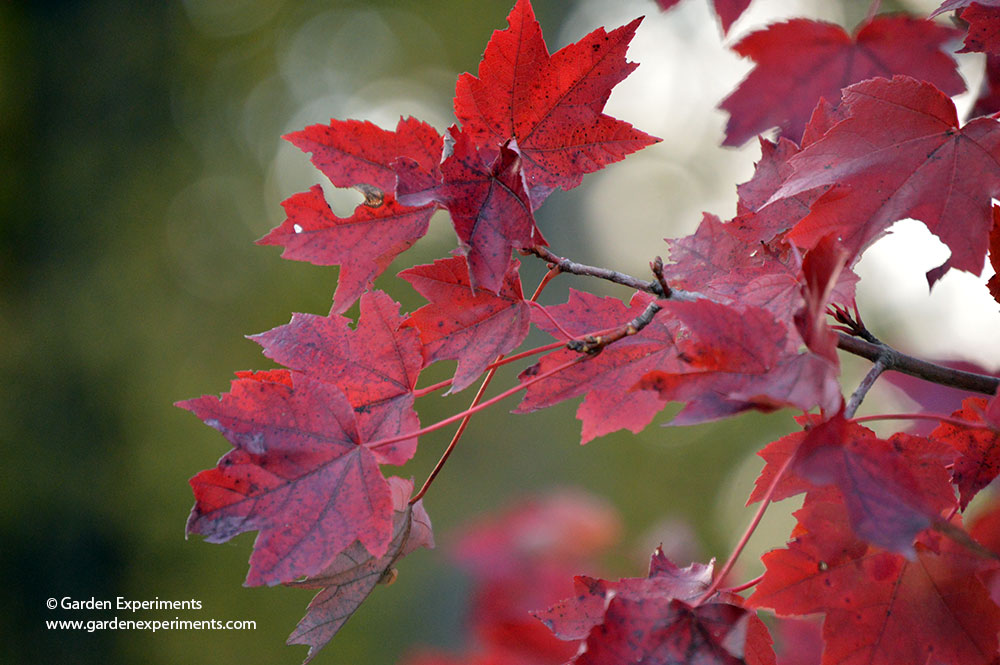
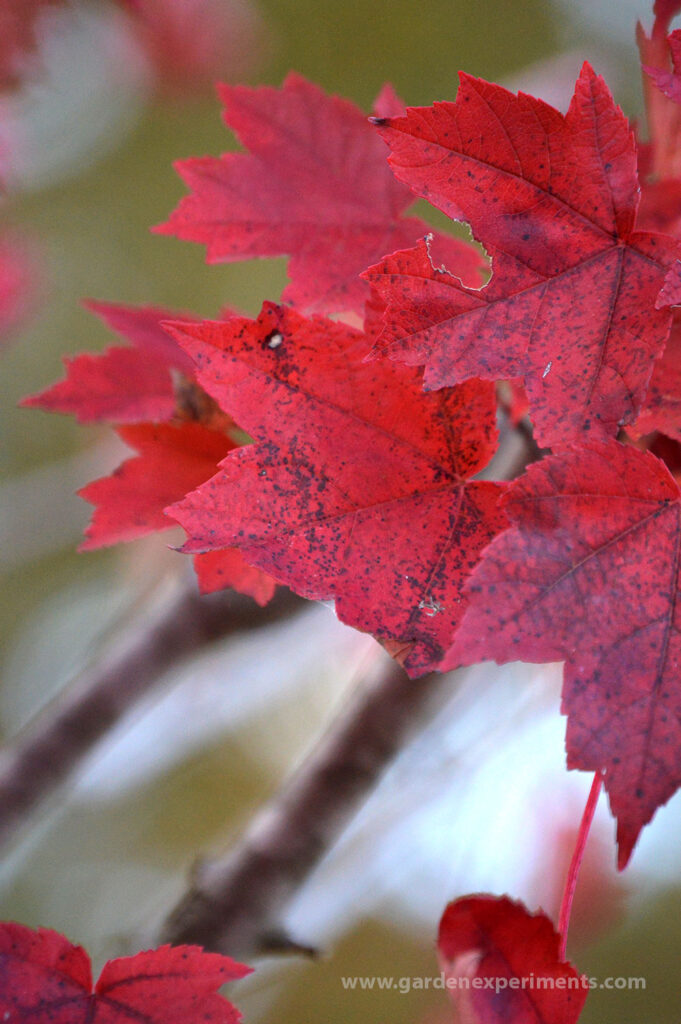
3. Flowering dogwood (Cornus florida)
Not only does this native tree produce beautiful greenish to white flowers in early spring, but the fall color of its leaves and berries will make your backyard shine with color. Even better – the berries are a favored fall food of squirrels, quail, cedar waxwings, woodpeckers, cardinals, and other birds.
Flowering dogwood is a smaller tree; it generally grows between 15 and 30 feet. It grows best in well-drained, rich soils in part-shade. It is a forest understory tree, meaning it grows underneath the canopy of the taller trees.
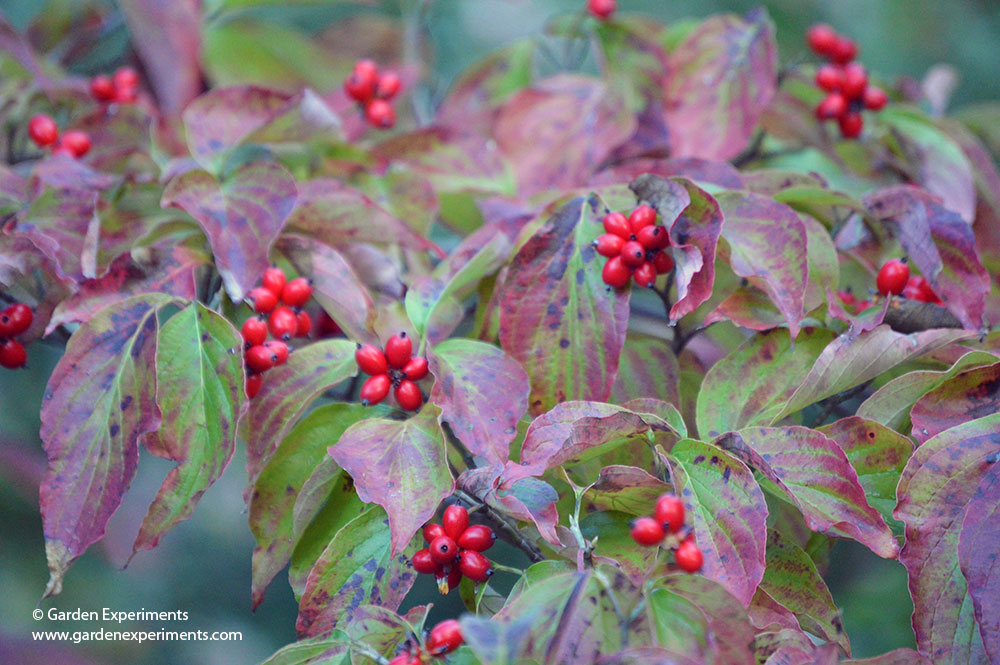
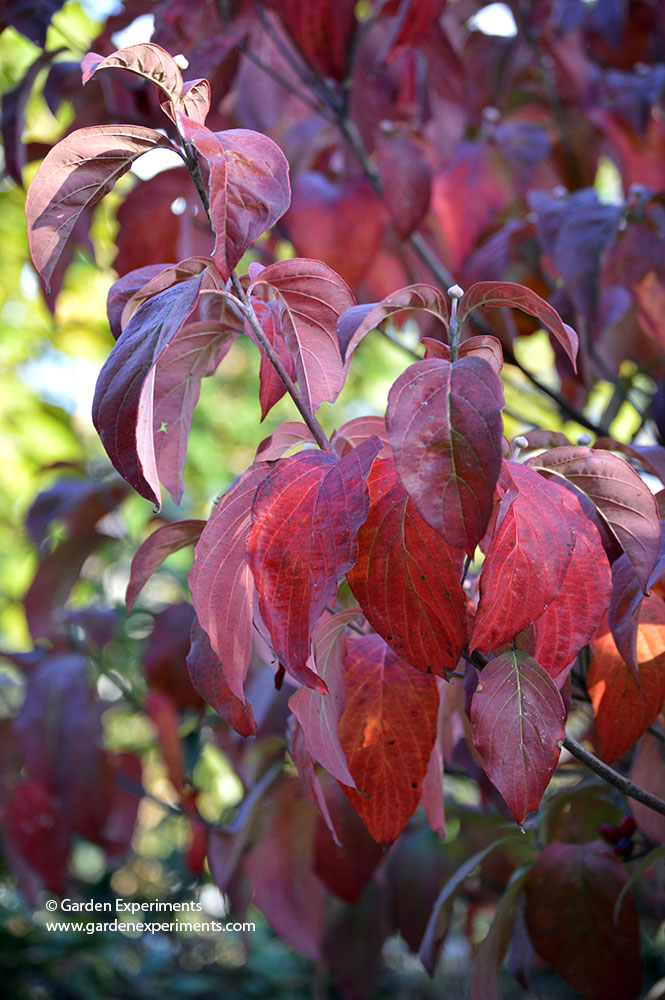
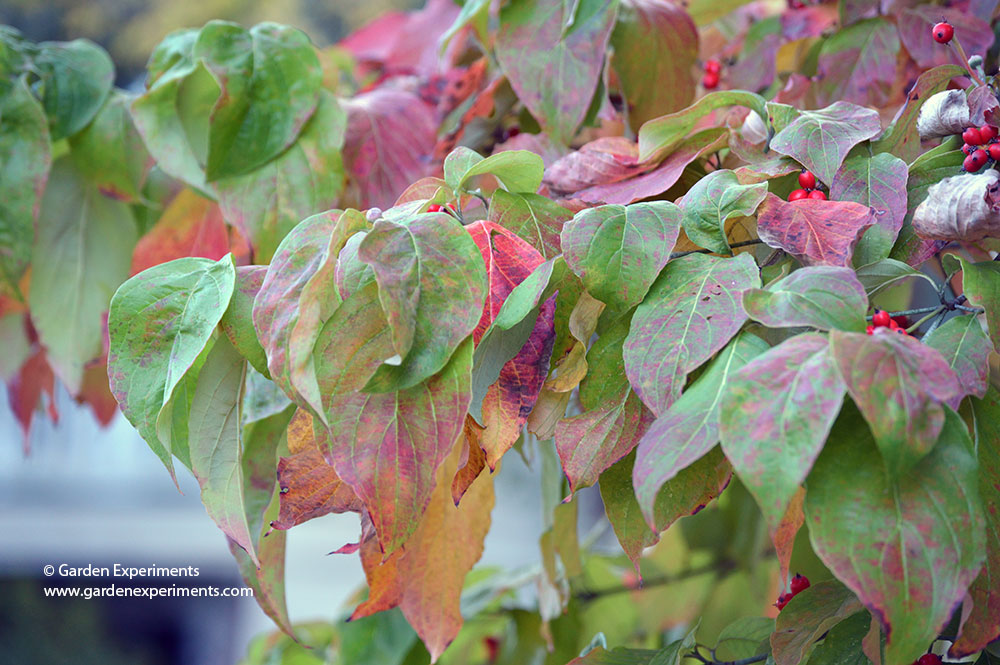
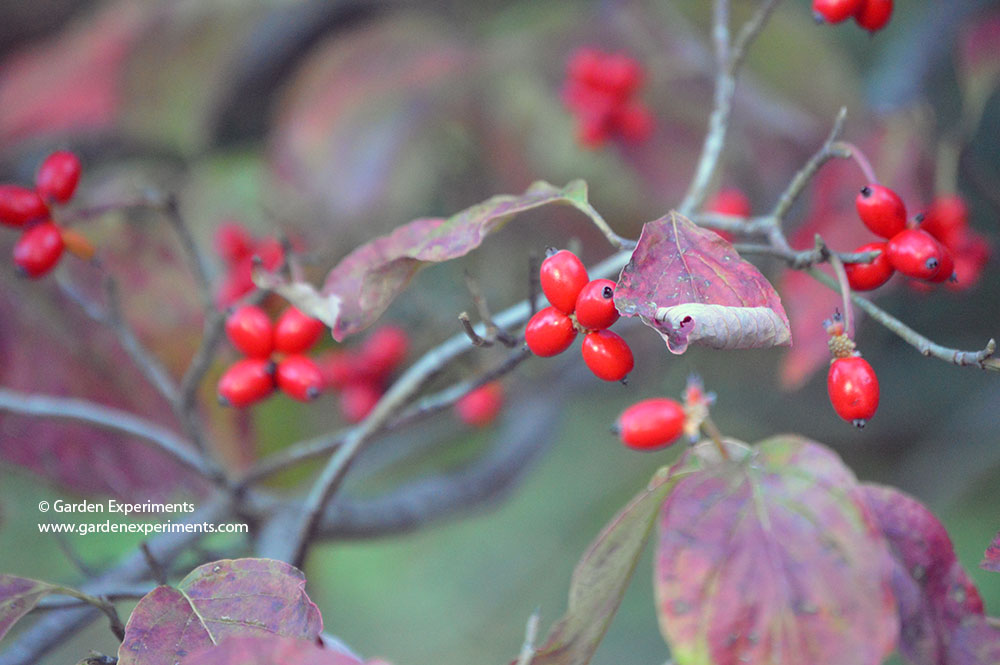
5. Ginkgo (Ginkgo biloba)
The bright, cheerful yellow color of Ginkgo leaves in fall can’t be beat. I have always loved how the leaves look and fall only brings out their splendor.
Ginkgo trees prefer full sun but can tolerate part shade. They grow to a height of 25 to 50 feet with a crown size of about 30 feet. It’s a medium-fast grower, growing over a foot each year. Ginkgo trees tolerate a wide range of soils – clay, well-drained, wet, sandy, etc.
Ginkgo trees are dioecious – meaning there are male and female trees. If you don’t want to deal with the fruits produced by these trees (the odor produced by rotting fruit is unpleasant), then plant only male trees to avoid the trees reproducing.
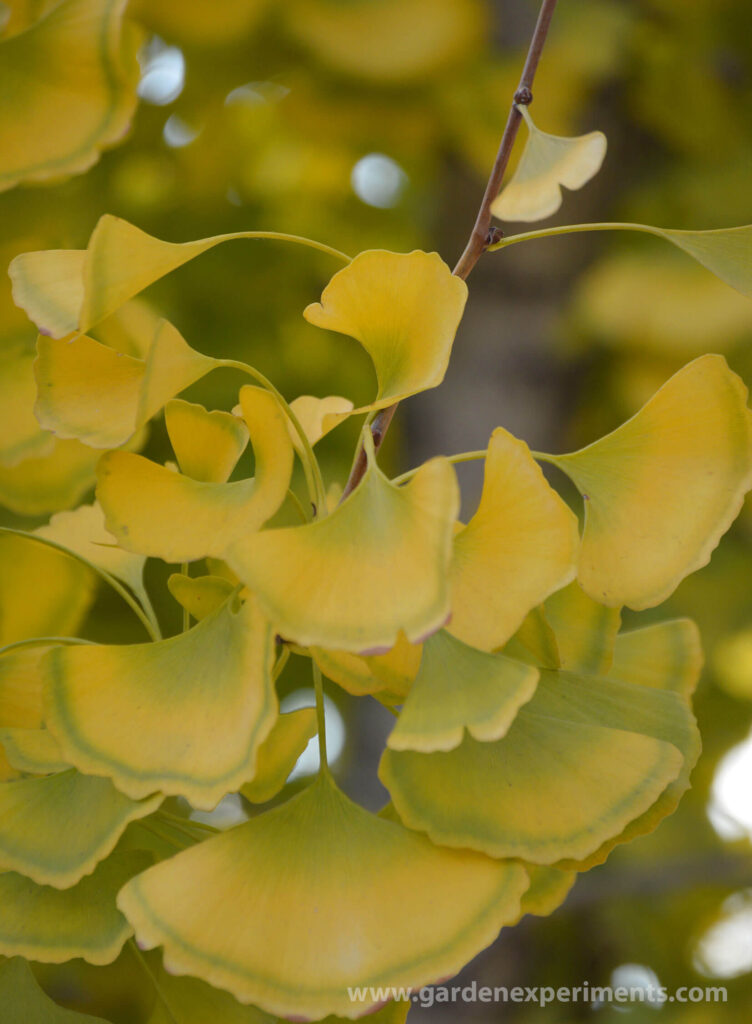
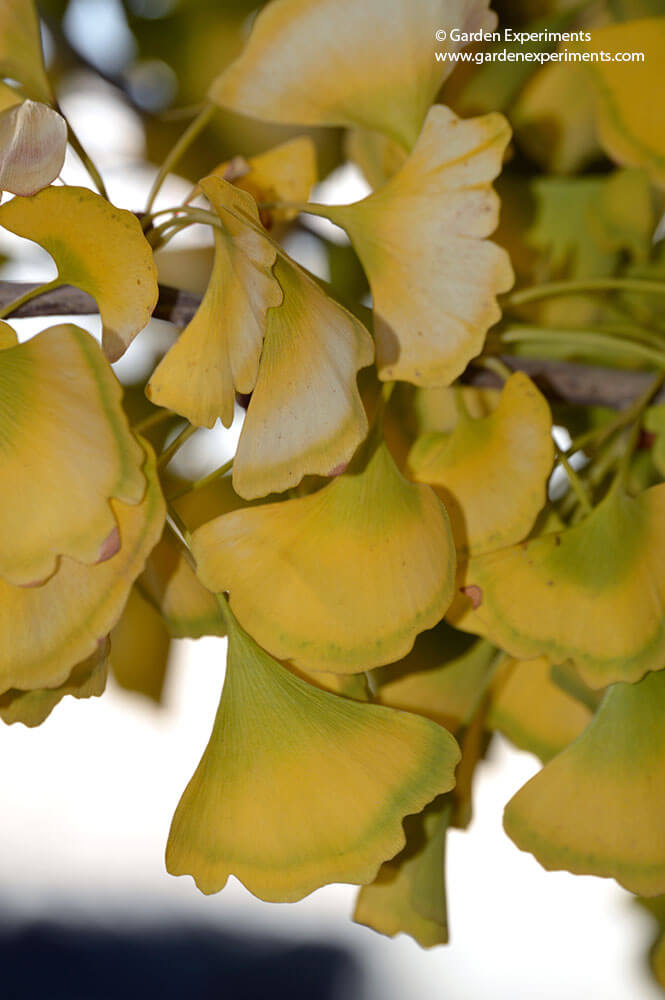
If you want to include shrubs in your landscape that add bright fall colors, these native shrubs are a great option.
